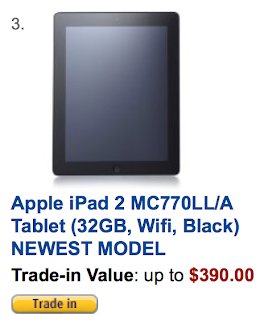For those of you who will be participating in NaNoWriMo…this post, by Steven Sande, originally appeared on the TUAW blog on 10/29/11.
This morning, I noticed a tweet from @rvbelzen that said, "As a NaNoWriMo veteran, do you have any tips for this NaNoWriMo newbie, maybe an article you wrote about it?" Most of the posts that I’ve done about National Novel Writing Month for TUAW have focused on the tools, not on the technique. Based on the tweet, I thought I’d give you some hints from a three-time NaNoWriMo winner (that means you wrote a 50,000-word novel in the month of November) about how to prepare for the writing marathon.
Helpful Hints For Writing Your NaNoWriMo Novel
1) Make sure you have a broad outline of your plot and characters in your mind or on paper. This was the hardest part for me the first two years I did NaNoWriMo, as I had a story in my head but didn’t spend the time to think of characters or how the story was going to evolve. As a result, those first two novels were only about halfway through the total plot line when I got to 50,000 words. What I suggest is sitting down with your favorite writing tool — whether that’s TextEdit, Word, Storyist, Story Mill, Scrivener, or another other writing tool, and just write a quick outline of how the story is going to unfold. Come up with character names and a rough description, locations, etc., and write them down as well.
2) At some point on November 1st, sit down for an uninterrupted spell of writing. In order to write 50,000 words in a month, you’ll need to average 1,667 words a day. I find that setting aside time to write in a place where I’m not going to be interrupted by talk, TV, or tweets is essential. If you’re enthusiastic about your story, that 1,667 words is going to flow out of you, and you’ll find that some days you’re writing 2,500 words. Go for it on those days, because you’ll have other days when you need to take a break. My favorite place to write NaNoWriMo novels? The kitchen table. The chair is uncomfortable, so I need to write quickly so I can get out of it ASAP.
3) It’s all about words, not about tools. I’ve noticed over the last few days that I see more and more tweets about "which tool should I use?" There are debates going on about the merits of Storyist versus Scrivener, or using one of the many minimalist writing tools. Here’s my take on the writing tools: don’t go out of your way to buy a new app that has lots of bells and whistles, because they’ll get in the way of writing your novel. Many of the novel-writing apps have ways to write outlines, build character cards, etc. I found these tools to be so incredibly distracting that I finally just started using minimalist tools. You can easily write a NaNoWriMo novel in Pages or Word — you don’t need an "author’s tool" unless you really think it will help you. My second NaNoWriMo novel was actually written in TextEdit.
Read the rest of the post on the TUAW blog.








 You can tailor your e-book cards for your own needs. For my cards, my publisher put the book cover on side 1 and included two important notes on it: “E-book Card Edition” and “Read On Any Device.” On the accompanying display, we mention that the e-book card edition is cheaper than anywhere else the book is sold, which gives bookstore owners a clear incentive to stock them and gives readers a great reason to buy in-store as opposed to buying online. Our e-book card edition also contains exclusive content.
You can tailor your e-book cards for your own needs. For my cards, my publisher put the book cover on side 1 and included two important notes on it: “E-book Card Edition” and “Read On Any Device.” On the accompanying display, we mention that the e-book card edition is cheaper than anywhere else the book is sold, which gives bookstore owners a clear incentive to stock them and gives readers a great reason to buy in-store as opposed to buying online. Our e-book card edition also contains exclusive content. Neil Gaiman tried the free giveaway experiment a little while back – the readers of his blog voted which novel of his they most wanted to recommend to friends (it ended up being American Gods), and then he made it freely downloadable for a month, after and during which time his publishers monitored his sales to see what happened. Similar to Cory Doctorow’s experience, sales of ALL his books (and not just American Gods) went way, way up, which I think Gaiman compared to something of a library/lending effect, i.e.: most people discover new authors because someone, be it a friend or a library, loans them a copy of the book, thereby encouraging them to buy that author’s works in the future but without the initial risk of paying money for a product they might not like.
Neil Gaiman tried the free giveaway experiment a little while back – the readers of his blog voted which novel of his they most wanted to recommend to friends (it ended up being American Gods), and then he made it freely downloadable for a month, after and during which time his publishers monitored his sales to see what happened. Similar to Cory Doctorow’s experience, sales of ALL his books (and not just American Gods) went way, way up, which I think Gaiman compared to something of a library/lending effect, i.e.: most people discover new authors because someone, be it a friend or a library, loans them a copy of the book, thereby encouraging them to buy that author’s works in the future but without the initial risk of paying money for a product they might not like.